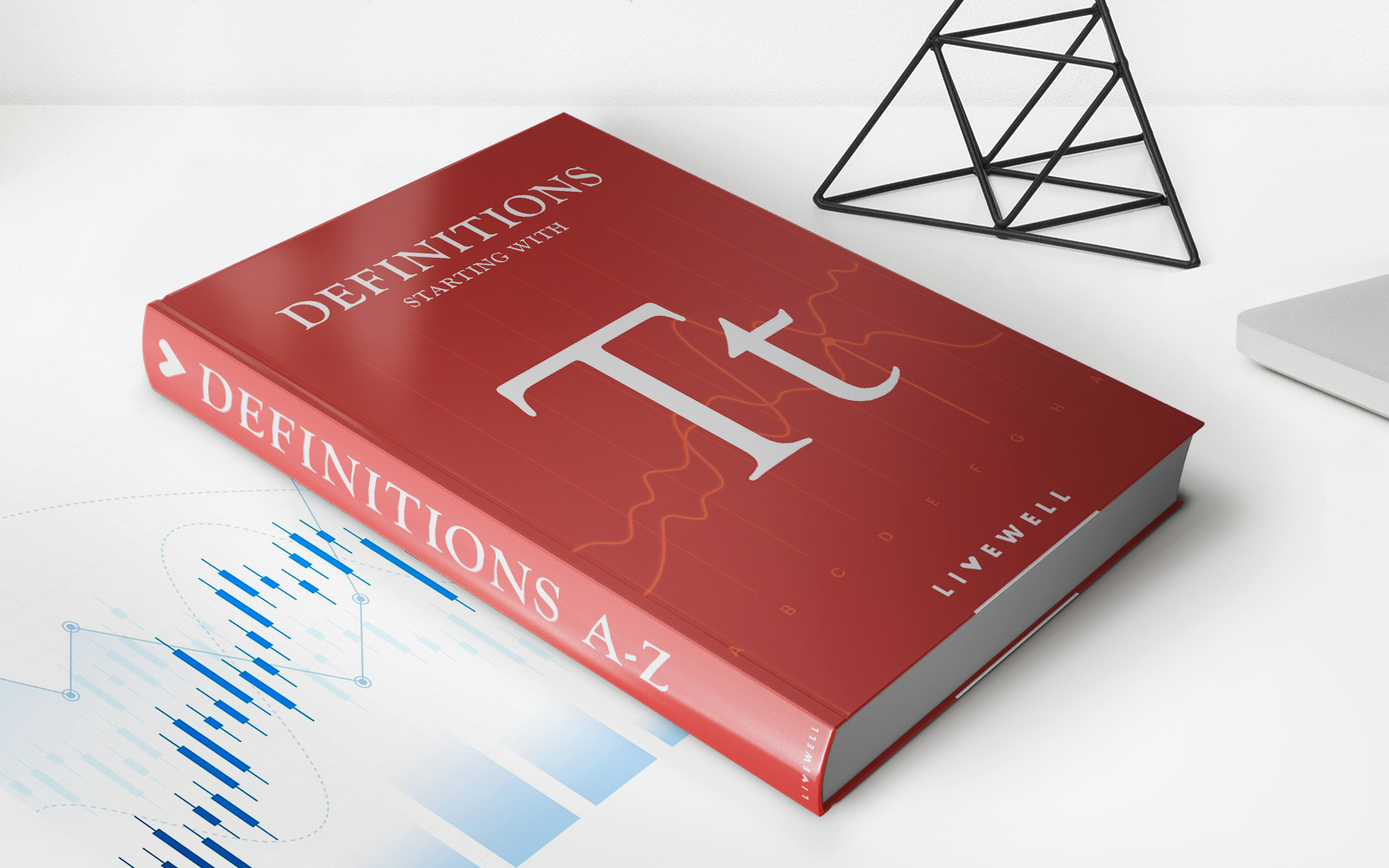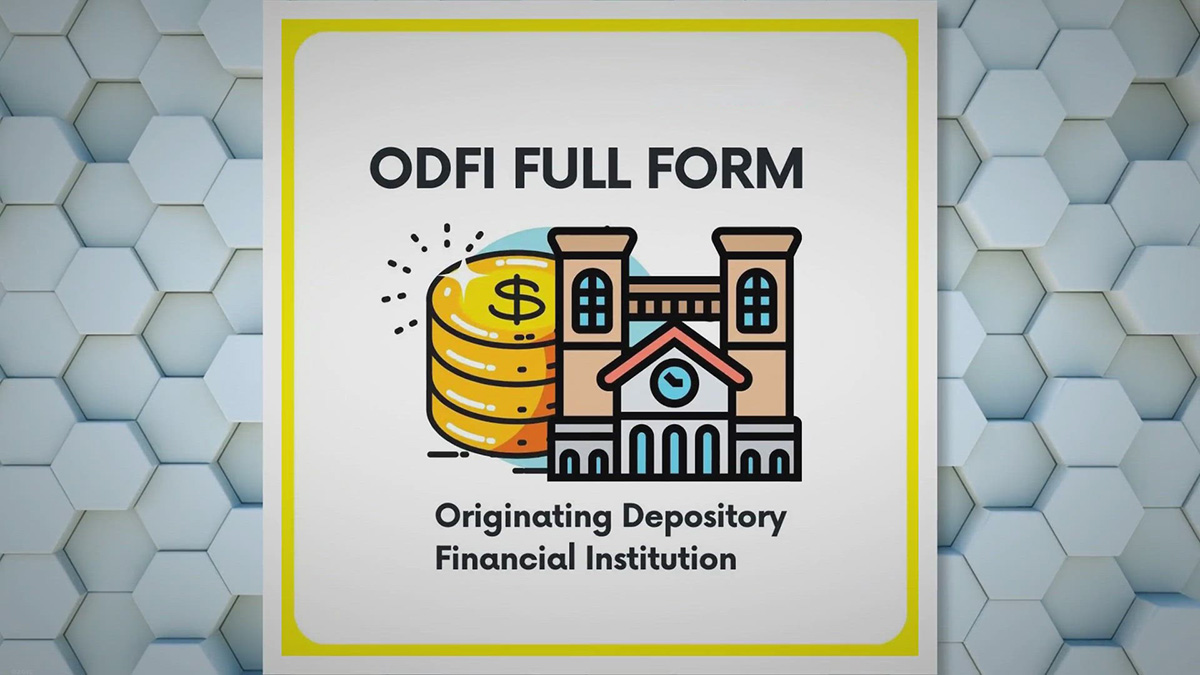

Finance
What Is A 10-Year Term Life Insurance Policy?
Modified: February 21, 2024
Learn about the benefits and coverage of a 10-year term life insurance policy, a popular financial option for individuals seeking temporary protection.
(Many of the links in this article redirect to a specific reviewed product. Your purchase of these products through affiliate links helps to generate commission for LiveWell, at no extra cost. Learn more)
Table of Contents
- Introduction
- Understanding Term Life Insurance
- What Is a 10-Year Term Life Insurance Policy?
- Features and Benefits of a 10-Year Term Life Insurance Policy
- Pros and Cons of a 10-Year Term Life Insurance Policy
- Who Should Consider a 10-Year Term Life Insurance Policy?
- How to Apply for a 10-Year Term Life Insurance Policy
- Frequently Asked Questions (FAQs)
- Conclusion
Introduction
Life insurance is an essential financial tool that provides protection and security for your loved ones in the event of your untimely death. It offers a financial safety net, ensuring that your family can maintain their standard of living and meet their financial obligations even when you’re no longer there to support them. One type of life insurance policy that you may come across is a 10-year term life insurance policy.
A 10-year term life insurance policy is a specific type of life insurance coverage that provides protection for a period of ten years. It falls under the umbrella of term life insurance, which offers coverage for a specified term, typically ranging from 10 to 30 years. Unlike permanent life insurance policies such as whole life or universal life insurance, term life insurance is designed to provide coverage for a set period, offering simplicity and affordability.
Understandably, making decisions about life insurance can be overwhelming, especially with the wide range of policy options available. In this article, we will explore what a 10-year term life insurance policy entails, its features and benefits, as well as its pros and cons. We will also discuss who should consider this type of policy and how to apply for it. By the end, you’ll have a better understanding of whether a 10-year term life insurance policy is the right fit for you and your loved ones.
Understanding Term Life Insurance
Before delving into the details of a 10-year term life insurance policy, it’s important to have a solid understanding of term life insurance in general. Term life insurance is a type of life insurance coverage that provides protection for a specified term or period. It offers a death benefit to the designated beneficiaries if the insured person passes away during the term of the policy.
Unlike permanent life insurance policies that provide coverage for the insured’s entire lifetime, term life insurance is temporary coverage. It is typically purchased to meet specific financial obligations or protect against the loss of income during a certain period. The terms of a term life insurance policy can vary, ranging from 10 to 30 years, depending on the needs and preferences of the policyholder.
Term life insurance is generally more affordable compared to permanent life insurance options like whole life or universal life insurance. This is because term life insurance policies do not include a cash value component or investment features. Instead, they focus solely on providing a death benefit during the specified term.
One of the advantages of term life insurance is its flexibility. Policyholders have the freedom to choose the coverage amount and term length that best aligns with their needs and goals. For example, a young professional with a mortgage and dependent children may opt for a 20 or 30-year term policy to ensure that their family’s financial needs are covered during the years when they are most vulnerable.
It’s important to note that term life insurance policies generally do not offer a refund of premiums at the end of the policy term. If the policyholder outlives the term, the coverage will expire, and there will be no payout or cash value accumulation. However, some insurance companies may offer options for policy conversion or renewal at the end of the term.
Now that we have a basic understanding of term life insurance, let’s dive into the specifics of a 10-year term life insurance policy and what sets it apart from other term lengths.
What Is a 10-Year Term Life Insurance Policy?
A 10-year term life insurance policy, as the name suggests, provides life insurance coverage for a period of ten years. It is a popular choice for individuals who have a specific financial obligation or responsibility that they want to protect over a relatively short period.
With a 10-year term life insurance policy, the death benefit is paid to the beneficiaries if the insured passes away within the ten-year term. This payout can help cover outstanding debts, replace lost income, pay for funeral expenses, or provide financial support for dependents.
One of the key advantages of a 10-year term life insurance policy is its affordability. Premiums for a 10-year term policy are typically lower compared to longer-term policies. This makes it an attractive option for individuals who have a limited budget but still want to ensure their loved ones are financially protected in the event of their death.
Another advantage of a 10-year term life insurance policy is its flexibility. It provides coverage for a specific period, which can align with short-term financial obligations. For example, if you have a ten-year mortgage, you can choose a 10-year term policy to ensure that your mortgage is covered if something were to happen to you during that time. Similarly, if you have children who will be financially dependent on you for the next ten years, a 10-year term policy can provide the necessary financial protection until they become financially independent.
It’s worth noting that a 10-year term life insurance policy offers coverage only for the specified term and does not typically include any cash value component or savings feature. This means that if the insured person outlives the ten-year term, there is no payout or return of premiums. However, some insurance companies may offer policy conversion options that allow you to convert your term policy into a permanent policy without the need for medical underwriting.
Overall, a 10-year term life insurance policy provides affordable and temporary coverage for individuals who have specific financial obligations or responsibilities that they want to protect over the next ten years. It offers peace of mind by ensuring that your loved ones are financially protected during this period.
Features and Benefits of a 10-Year Term Life Insurance Policy
Choosing a 10-year term life insurance policy comes with a range of features and benefits that make it a popular choice among individuals looking for affordable and temporary life insurance coverage. Let’s explore some of the key features and benefits:
1. Affordability: One of the primary advantages of a 10-year term life insurance policy is its affordability. Premiums for a 10-year term policy are generally lower compared to longer-term policies, making it an attractive option for those on a limited budget.
2. Flexible coverage: A 10-year term policy provides coverage for a specific period, making it a flexible choice for individuals who have short-term financial obligations or responsibilities. Whether you want to protect a mortgage, education expenses, or provide income replacement for a specific number of years, a 10-year term policy can cater to your needs.
3. Simple and straightforward: 10-year term life insurance policies are designed to be simple and straightforward. They focus solely on providing a death benefit to beneficiaries if the insured person passes away during the ten-year term. This simplicity makes it easier to understand and compare different policy options.
4. No cash value accumulation: Unlike permanent life insurance policies, a 10-year term policy does not accumulate cash value over time. This means that the premiums you pay are solely towards the death benefit. While there is no savings component, the lower premiums allow you to allocate your budget towards other financial goals or investments.
5. Renewability and convertibility options: Some insurance companies offer renewable and convertibility options for 10-year term policies. This means that at the end of the initial term, you may have the option to renew the policy or convert it into a permanent life insurance policy without the need for medical underwriting. This can be beneficial if your circumstances change or if you decide you need longer-term coverage.
6. Peace of mind: By choosing a 10-year term life insurance policy, you provide a financial safety net for your loved ones during a specific period. Knowing that your family will be protected if something were to happen to you can bring peace of mind and alleviate financial worries.
It’s important to note that every insurance policy may have slight variations in features and benefits, depending on the insurance company and the specific policy terms. Therefore, it’s essential to review and understand the policy details before making a final decision.
In the next section, we’ll explore the pros and cons of a 10-year term life insurance policy to help you make a well-informed decision about whether it’s the right option for you.
Pros and Cons of a 10-Year Term Life Insurance Policy
Like any financial product, a 10-year term life insurance policy comes with its own set of advantages and disadvantages. Understanding the pros and cons can help you make an informed decision about whether it’s the right choice for your life insurance needs. Let’s explore them:
Pros:
1. Affordability: One of the biggest advantages of a 10-year term life insurance policy is its affordability. Premiums for a 10-year term policy tend to be lower compared to longer-term policies, making it more accessible for individuals on a tighter budget.
2. Flexibility: A 10-year term policy offers flexibility in coverage duration. It allows you to align the policy term with specific financial obligations or responsibilities that have a defined time frame, such as a mortgage or supporting dependents until they reach financial independence.
3. Simple and straightforward: 10-year term life insurance policies are straightforward and easy to understand. They focus solely on providing a death benefit during the specified term without any cash value accumulation or complex investment features.
4. Renewability and convertibility: Many insurance companies offer renewability and convertibility options for 10-year term policies. This means that at the end of the initial term, you can renew the policy or convert it into a permanent life insurance policy without the need for additional medical underwriting. This provides flexibility for future coverage needs.
5. Immediate protection: Once you purchase a 10-year term life insurance policy, you have immediate coverage. This means that if anything were to happen to you during the policy term, your beneficiaries will receive the death benefit to help cover financial obligations and provide financial security.
Cons:
1. Limited coverage duration: The primary drawback of a 10-year term life insurance policy is its limited coverage duration. Once the policy term ends, you will no longer have coverage unless you renew or convert the policy. If you still have ongoing financial responsibilities, you may need to secure additional coverage at the end of the term.
2. No cash value accumulation: Unlike some permanent life insurance policies, a 10-year term policy does not accumulate cash value over time. This means that if you outlive the policy term, there is no payout or return of premiums.
3. Increasing premiums upon renewal: If you choose to renew your 10-year term policy at the end of the initial term, the premiums may increase. This is because rates are typically based on age and health, and as you get older, the risk to the insurance company may increase.
4. Not suitable for long-term coverage needs: A 10-year term life insurance policy is designed for short-term coverage needs. If you require coverage for a longer duration, such as providing for young children until they reach adulthood or ensuring financial security for a spouse throughout their lifetime, a longer-term policy may be more appropriate.
Understanding the pros and cons can help you assess whether a 10-year term life insurance policy aligns with your specific insurance needs and financial goals. It’s essential to evaluate your individual circumstances and consult with a financial advisor or insurance professional to determine the most suitable coverage option for you.
Next, we’ll discuss who should consider a 10-year term life insurance policy and the factors to consider when making this decision.
Who Should Consider a 10-Year Term Life Insurance Policy?
A 10-year term life insurance policy is well-suited for individuals who have specific short-term financial obligations or responsibilities that need protection. Here are some scenarios where a 10-year term policy may be a fitting choice:
1. Mortgage protection: If you have a mortgage that will be paid off within the next ten years, a 10-year term policy can provide coverage to ensure that your family can continue to make mortgage payments if you pass away during that period.
2. Income replacement: For individuals who are the primary earners in their families, a 10-year term policy can serve as income replacement for a specific period. This ensures that if something were to happen to you, your loved ones will have financial support to cover ongoing living expenses.
3. Supporting dependents: If you have dependent children or family members who rely on your financial support, a 10-year term policy can provide protection until they become financially independent. This type of policy gives you peace of mind, knowing that your loved ones will be taken care of during their most vulnerable years.
4. Education expenses: If you have children who will be attending college or university within the next ten years, a 10-year term policy can help cover the costs of their education if you were to pass away during that time. It ensures that their educational aspirations are not compromised due to a lack of financial resources.
5. Business purposes: Entrepreneurs or business owners may use a 10-year term policy to protect key employees or provide coverage for business loans that will be repaid within the next ten years. It offers financial security and continuity for the business in the event of the insured’s death.
When considering a 10-year term life insurance policy, it’s important to assess your specific needs, obligations, and budget. Evaluate your financial situation, debt levels, family dynamics, and future goals to determine the appropriate coverage length and death benefit amount.
Keep in mind that a 10-year term policy may not be suitable for individuals who require long-term coverage or have significant financial obligations that extend beyond the ten-year period. In such cases, longer-term policies or permanent life insurance options may be more appropriate.
To make an informed decision, it’s recommended to consult with a licensed insurance professional or financial advisor who can help assess your unique circumstances and provide guidance on the most suitable life insurance solution for you.
In the next section, we’ll explore the process of applying for a 10-year term life insurance policy and the factors to consider during the application process.
How to Apply for a 10-Year Term Life Insurance Policy
Applying for a 10-year term life insurance policy involves several steps to ensure that you receive the coverage that meets your specific needs. Here’s a general overview of the application process:
1. Evaluate Your Needs: Assess your financial situation, obligations, and future goals to determine the appropriate death benefit amount and policy term that align with your specific needs. Consider factors such as outstanding debts, income replacement, education expenses, and ongoing financial responsibilities.
2. Research Insurance Providers: Research and compare different insurance providers to find a reputable company that offers 10-year term life insurance policies. Look for a company with a strong financial track record, favorable customer reviews, and competitive premium rates.
3. Obtain Quotes: Contact insurance providers or use their online platforms to obtain quotes for a 10-year term policy. Provide accurate information about your age, health condition, lifestyle, and any relevant medical history to receive accurate quotes.
4. Complete the Application: Once you have chosen an insurance provider and decided on the coverage amount and policy term, complete the application form. The application will require personal information, medical history, lifestyle details, and beneficiaries’ information.
5. Undergo a Medical Exam (if required): Depending on the coverage amount and the insurance company’s underwriting process, you may need to undergo a medical exam. The exam typically includes measurements, blood work, and a review of your medical history. The insurer uses this information to assess your overall health and determine the premium rates.
6. Review the Offer: After evaluating your application materials and medical exam results, the insurance company will provide you with an offer that outlines the coverage terms and premium rates. Take the time to carefully review the offer, including any clauses, exclusions, or additional riders available.
7. Accept and Make Payment: If you are satisfied with the offer, accept it, and make the initial premium payment. The coverage will typically begin once the payment is received, and the policy is in force.
8. Policy Delivery: You will receive a copy of the policy documents, including the policy contract, terms, and conditions. Read through the documents thoroughly and keep them in a safe place for future reference.
It’s important to note that the application process and requirements may vary depending on the insurance provider and your specific circumstances. Some insurance companies may offer simplified underwriting or no-medical-exam options, which can expedite the process.
To ensure a smooth application process, be truthful and accurate when providing information, as any misrepresentation or concealment of relevant facts may result in the denial of a claim in the future.
Consulting with a licensed insurance professional can help simplify the application process and ensure that you are selecting the most suitable 10-year term life insurance policy for your needs. They can guide you through the process and provide valuable insights and recommendations.
In the next section, we’ll address some frequently asked questions about 10-year term life insurance to further enhance your understanding of this coverage option.
Frequently Asked Questions (FAQs)
Here are answers to some common questions about 10-year term life insurance:
Q: Can I renew or extend my 10-year term life insurance policy?
A: Some insurance companies offer the option to renew or extend a 10-year term policy at the end of the initial term. However, the premiums may increase upon renewal, typically based on age and health factors.
Q: Can I convert my 10-year term life insurance policy into a permanent policy?
A: Many insurance providers offer convertibility options for 10-year term policies. This allows you to convert your term policy into a permanent life insurance policy without the need for additional medical underwriting. Conversion options may vary by company, so it’s important to review the terms of your specific policy.
Q: Is a medical exam required for a 10-year term life insurance policy?
A: Depending on the insurance company and the coverage amount applied for, a medical exam may be required. The medical exam helps the insurer assess your health condition and determine the premium rates. However, some companies offer no-medical-exam or simplified underwriting options for certain policy amounts.
Q: Can I add riders to my 10-year term life insurance policy?
A: Riders are additional policy features that can enhance the coverage of your life insurance policy. Some common riders include accelerated death benefit, waiver of premium, and child term riders. Availability and terms of riders may vary by insurance company, so it’s important to inquire about available riders during the application process.
Q: Can I cancel my 10-year term life insurance policy?
A: Yes, you can cancel a 10-year term life insurance policy, but it’s important to understand the terms and any potential consequences. Canceling a policy before the term ends may result in the loss of premiums paid, and there may be fees or penalties involved. It’s advisable to consult with your insurance provider before making any decisions.
Q: When should I consider renewing or converting my 10-year term policy?
A: Renewing or converting your 10-year term policy should be considered if you still have financial obligations or responsibilities beyond the initial term. If you need coverage for a longer period or would like to maintain life insurance without the need for further medical underwriting, renewing or converting your policy can provide continued protection.
Remember that each insurance company may have variations in their policy terms, options, and guidelines. It’s crucial to carefully review and understand the terms of your specific policy and consult with a licensed insurance professional to address any specific questions or concerns you may have.
In the concluding section, we’ll summarize the key points discussed and reiterate the benefits of a 10-year term life insurance policy.
Conclusion
A 10-year term life insurance policy offers a temporary and affordable solution for individuals seeking life insurance coverage. It provides financial protection for a specific period, typically ten years, allowing you to meet short-term obligations and responsibilities. The key features and benefits of a 10-year term policy include affordability, flexibility, simplicity, and the peace of mind in knowing that your loved ones will be financially protected.
However, it’s important to evaluate your individual circumstances and consider your long-term goals before deciding on a 10-year term policy. If you have ongoing financial obligations that extend beyond the ten-year period or require coverage for a longer duration, a longer-term policy or permanent life insurance option may better suit your needs.
When applying for a 10-year term life insurance policy, it’s crucial to thoroughly research insurance providers, accurately assess your needs, complete the application process diligently, and review the policy terms and conditions. Consulting with a licensed insurance professional can provide invaluable guidance and help you make an informed decision about the most suitable coverage option for your unique circumstances.
Remember, life insurance is a crucial component of a well-rounded financial plan. It offers protection and ensures the financial security of your loved ones in the event of your untimely passing. By understanding the details, options, and considerations of a 10-year term life insurance policy, you can confidently choose the coverage that aligns with your needs and provide the necessary financial support for your family.














